Today, March 27, is World Theater Day, and this year in Italy it will be an even bigger celebration after Italian Opera Singing entered the UNESCO Intangible Heritage of Humanity List in December.
Teatro all'Italiana, in fact, was born in our Bel Paese between the 1600s and 1700s with the spread of Opera and has been an indispensable component of Italy's cultural roots practically since the country's birth.
The same goes for the Greek and Roman theaters and amphitheaters, which were not only places dedicated to entertainment but real centers of aggregation, crucial places in the social and political life of citizens.
Italy has as many as 62 Opera Houses and is the nation with the most theaters in the world!
And there are almost 200 ancient Greek and Roman theaters as well!
If you are in Italy, do not forget to visit one of the many theaters scattered all over the peninsula: both ancient arenas and opera houses are worth visiting not only to see performances of all kinds, but also to admire their architectural magnificence.
In this article, we at Visititaly will take you on a tour around the country to introduce you to 15 of Italy's most striking theaters and amphitheaters, for a journey back in time among velvet seats and curtains and stone steps.

What are the most important Italian Theatres?
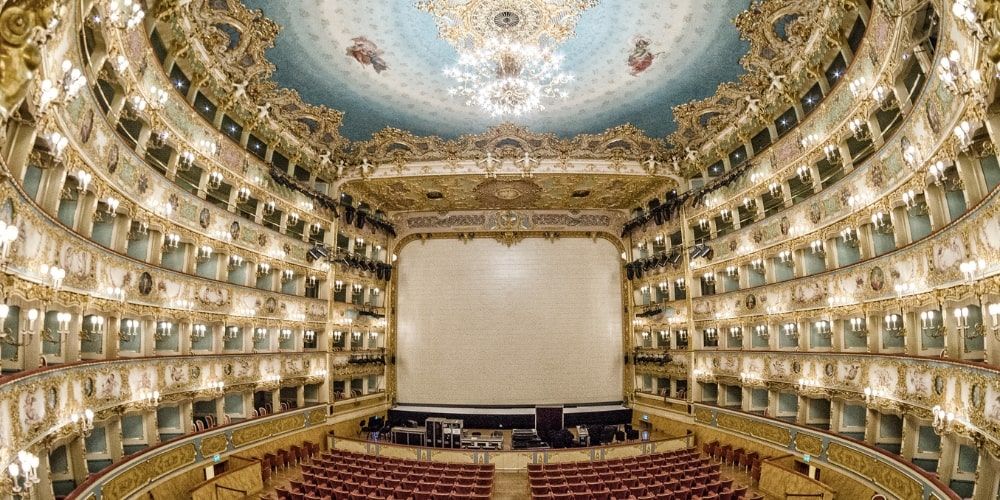
Explore beauty and art through the discovery of the 10 most famous and evocative Italian theatres and find out how to visit them with us: Teatro Massimo in Palermo, Teatro San Carlo in Naples, Opera Theatre in Rome, La Fenice Theatre in Venice and AlLa Scala Theatre in Milan, Olimpico Theatre in Vicenza, Della Pergola Theatre in Florence, Neapolis Theatre in Syracuse, Greek Theatre in Taormina and Verona Arena.
And alongside the most famous ones, you will find authentic hidden gems, rich in frescoes, decorations and atmospheric lighting.
Shall we start?
Listen to the podcast version of the article with Monna Lisa and Leonardo's voices
15. Teatrino di Vetriano, Pescaglia (Lucca) - Tuscany
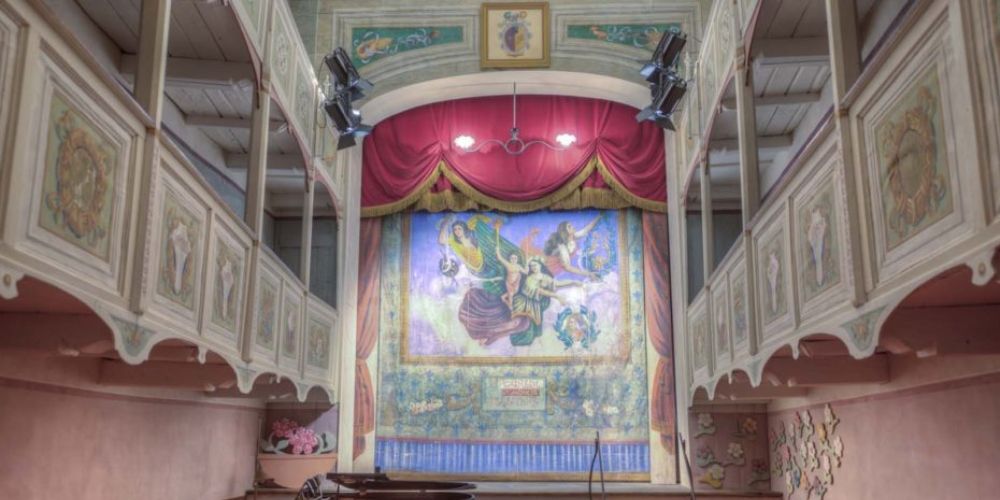
We open our list with a real treat: the smallest Theater in the World!
Yes, you read that right, this small theater has only 80 seats and in 1997 it entered the Guinness World Records Book as the 'Smallest Historic Public Theater in the World.'
The history of the Teatrino di Vetriano dates back to 1889, when the small community of Pescaglia in the province of Lucca was given a barn to be used as a theater. The inhabitants of the small village taxed themselves to do the work, and after only a year, the theater was opened for its first performances in 1890.
As the years went by, however, the theater fell into slow neglect and became unfit for use until FAI Fondo Ambiente Italiano financed a thorough restoration, and in 2002 the Teatrino di Vetriano was reopened to host a full-fledged theater season, also in collaboration with the Teatro alla Scala in Milan.
Today the theater can seat 60 people in the stalls and 20 on two tiers of boxes decorated with coats of arms, garlands, masks, trompe l'oeil motifs, and the small stage, just 5 and a half meters in size, is enriched by a beautiful curtain painted with the Allegory of the Arts.
14. Teatro Sannitico, Pietrabbondante (IS) - Molise

Molise is a small region in central Italy still little traveled by mass tourism, but it holds a naturalistic, historical-artistic and archaeological heritage of great beauty!
Among the testimonies to the glorious past of the peoples who inhabited Molise is the Italic Sanctuaries of Pietrabbondante, in the province of Isernia, of which the majestic Samnite Theater, built between the late 2nd and early 1st centuries B.C. with a scheme typical of the Hellenistic age, is a part.
The càvea, or tiered seating for spectators in the amphitheaters of classical antiquity, has a semicircular structure and features four rows of stone seats with ergonomic backrests ending in armrests carved in the shape of griffin legs
In the theater of Pietrabbondante, theatrical performances were related to celebrations and sacred occasions.
The Samnite Theater of Pietrabbondante was rediscovered during excavations in the mid-20th century, and every year a theater season of classical plays is held in the atmospheric setting of a theater that sits at about 1,000 meters above sea level with incredible views of the valleys of Molise.
13. Sferisterio, Macerata - Marche
The Macerata Sferisterio was inaugurated in 1829 to be used for the Game of Pallacorda or Pallone col bracciale, but it was well suited to the holding of public performances, including the celebration of festivals, the organization of jousts, equestrian parades
In the early 1900s people began to think of the Sferisterio as the ideal setting for opera performances due to its structure and especially its excellent acoustics, and in 1921 Verdi's Aida was staged as the Sferisterio's first major opera performance.
Since then the most prestigious event of the year, now known throughout Europe as the Sferisterio Opera Festival, has taken place.
The Sferisterio is one of the greatest examples of the late Neoclassical style; it is a semi-elliptical shaped arena that can seat up to 3,000 spectators, with a large rectilinear wall that serves as a theatrical backdrop and a double tier of boxes separated by 56 columns and a stone balcony as a closing frame.
Each year the Sferisterio also hosts other major musical events such as Musicultura, a festival of popular and art music, as well as dance performances and concerts by some of the most famous national and international musicians and singers.
12. Teatro ‘G. Verdi’, Pisa - Toscana
The Theater of Pisa is one of Italy's finest tradition theaters.
On April 26, 1865, construction began on the new theater to replace the now cramped Teatro dei Ravvivati, and it was inaugurated on the evening of November 12, 1867 as the Regio Teatro Nuovo. In 1904, the theater was named after Giuseppe Verdi.
Since its founding, it has hosted celebrated singers and famous conductors, as well as important renowned artists and dance and drama companies.
The stage is one of the largest in Italy, and Teatro Verdi can accommodate about 900 spectators divided between an elegant stalls and five tiers of boxes decorated with period stucco, columns and tapestries.
Important artists and craftsmen from Pisa were also commissioned to decorate the foyer and the Ballroom, located on the second tier and also known as the Ridotto.
The Verdi Theater houses a collection of stage costumes by the great baritone Titta Ruffo, born in Pisa in 1877. The collection consists of 43 dresses made between 1898 and 1931, along with accessories, jewelry, wigs, scores and portraits.
Discover the wonders of Pisa!11. Teatro Petruzzelli, Bari – Puglia
The Petruzzelli Theater in Bari is the fourth largest theater in Italy.
Its construction began in 1898 by the Petruzzelli Family and was opened to the public in 1903.
Since its inauguration, the great classics of the opera repertoire have been performed and its stage has been trodden by world-famous artists.
In 1945 it was declared a "Monument of Historical and Artistic Interest" and subject to the Protection Act, and in 1973 it was declared a "Tradition Theater."
During World War II the Petruzzelli Theater was occupied by the Anglo-American army and dedicated to the entertainment of the troops. This was the inspiration for the famous film 'Stardust' (1973) set in the world of the avant-garde and starring the unforgettable Alberto Sordi and Monica Vitti.
On the night of October 26-27, 1991, the theater was devastated by arson, and after extensive restoration work it was reopened to the public in 2009.
The Petruzzelli Foundation offers the opportunity to take part in guided tours to learn about the history of the theater and discover its beauty.
Enjoy the tour of Bari by foot or bicycle!10. Teatro Massimo, Palermo - Sicilia
.jpg)
Massimo Theater in Palermo is the largest opera house in Italy and one of the most important theatres in the world. When it opened, it was the third largest in Europe after Paris and Vienna with its 7739 square metres of area. It was inaugurated in 1897 with Giuseppe Verdi's Falstaff under the direction of Leopoldo Mugnone.
Its imposing architecture is in the Greco-Roman style and is the work of architect Giovan Battista Filippo Basile and his son Ernesto, who succeeded him on his death.
The entrance, through a monumental staircase, has two bronze lions on either side. At the end of the staircase, a pronaos with six Corinthian columns welcomes the spectator, with the words "Art renews peoples and reveals their life. The pleasure of the scenes is in vain where it does not aim to prepare the future".
The Teatro Massimo is not only an important production centre but also a monumental work that can be visited. The visit allows you to discover the Pompeian Room and the Room of the Coats of Arms as well as the Foyer.
You can admire and see that each decoration is precise and constant is the repetition of columns, windows and arches. The building is topped by an enormous hemispherical dome with a diameter of 28.73 metres. In the initial project, the hall, including the boxes and gallery, could hold up to 3,000 spectators, later to become 1,247 according to the regulations that followed. The hall is shaped like a horseshoe and has perfect acoustics.
A special feature is the movable ceiling made of frescoed wooden panels, which, with an adjustable upward opening, allows ventilation of the hall. The 'Symbolic Wheel' depicting the Triumph of Music was created by Luigi Di Giovanni to a design by Rocco Lentini.
Discover the wonders of Palermo!9. Teatro dell'Opera, Rome - Lazio
Opera Theatre in Rome is perhaps the theatre that has undergone the greatest modernisation in the 20th century, especially in its façade. It was Domenico Costanzi who wanted this theatre and in fact the theatre bore his name until it was purchased by the Governor of Rome.
Costanzi entrusted the work to the architect Achille Sfondrini, who built it between 1874 and 1880 in neo-Renaissance style, paying great attention to acoustics. It was inaugurated on 27 November 1880 with Rossini's opera Semiramide. Originally the theatre had three tiers of boxes, an amphitheater and a gallery, all surmounted by a dome frescoed by Annibale Brugnoli.
In 1926 the Municipality of Rome bought it and renovation work was entrusted to the architect Marcello Piacentini, who increased the three tiers of boxes by one and installed an extraordinary crystal chandelier, the largest in Europe.
When the Republic came into power, Piacentini was again entrusted with the restoration of the facade, in particular, in a 20th-century style. Over the years, the Opera House has acquired international prestige with the succession of world-famous performers such as Caruso, Gigli, Maria Callas, Domingo and Pavarotti. Today the Rome Opera House has a capacity of 1650 seats.
Discover Rome with Visit Rome Pass!8. Teatro Greco, Taormina - Sicily
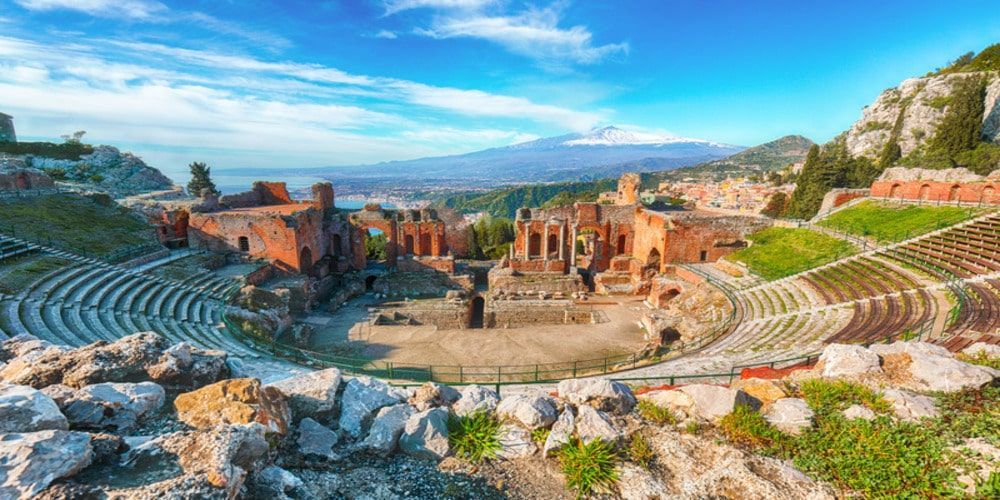
The Greek Theatre in Taormina is another famous Italian theatre from the Antiquity, dated back to the III century b.C., and it also included a small temple – not survived today.
It overlooks on a fairytale landscape, between Ionian Sea and the Etna, and keeps alive a tradition of ancient Greek drama productions; it offers also a program based on concerts, opera and ballet performances. It is also a location for award ceremonies, festivals, and films.
Of course, it is a fascinating attraction for tourists all over the world, who can enjoy its millenary beauty for a couple of euros.
Visit Greek Theatre in Taormina7. Teatro Alla Scala, Milan - Lombardia
Alla Scala Theatre in Milan is one of the largest and most prestigious in Italy. It was inaugurated on 3 August 1778 with the opera "L'Europa" by Antonio Salieri. It was built at the behest of Empress Maria Theresa of Austria by the neoclassical architect Giuseppe Piermarini on the ruins of the Ducal Theatre and the Church of Santa Maria alla Scala, demolished for the construction of the theatre.
The hall is shaped like a horseshoe and embellished with neoclassical decorations. To ensure better acoustics, a wooden vault was chosen, almost like a natural sounding board. Above the proscenium is a clock indicating the hours and minutes supported by two female figures in bas-relief.
Since 1812, with Rossini and many other prestigious names to follow, the Alla Scala theatre has become the home of melodrama and then also of ballet. On 16 August 1943, a bombing raid hit Milan, destroying the roof, the vault and other areas of the theatre. Reconstruction immediately followed, including the installation of a copy of the majestic 19th-century chandelier that was destroyed, which hangs from the vault and has 383 light bulbs.
Today the dominant colours are gold and ivory. A complex system of staircases with several flights, known as "pincer staircases", connects the foyer with the corridors leading to the boxes. In 2000, Piermarini's original design was extended by Swiss architect Mario Botta and today has 6 levels of boxes and galleries with 2030 spectators.
He also added a larger stage tower and engineer Franco Malgrande built a stage machine capable of bringing the scenes up to 4 metres above the normal stage level. Since 1951, at the behest of the then artistic director Victor de Sabata, La Scala's opening day has coincided with 7 December, St Ambrogio, the patron saint of Milan.
Visit La Scala!6. Teatro Olimpico, Vicenza - Veneto
Inaugurated in 1585, the Olympic Theatre of Vicenza was a project by the architect Andrea Palladio and it is the oldest covered Italian resident theatre of the modern age.
The Olympic Theatre celebrated noble families of Vicenza and housed classic comedies on stage, but today it provides operas, jazz concerts and musicals.
The peculiarity of this theatre lies in its wonderful architecture: it has a wooden and stucco structure but it is inspired by the ancient style of Roman temples and amphitheatres, enriched by columns, steps and 95 classic design statues, recalling Renaissance studies on Vitruvio.
Entering in this theatre means let yourself bewitched from a huge optical illusion, that makes you feel like being in the maze of a open air area – a very smart trick to visually enlarge a rather limited space. It is part of UNESCO World Heritage list and it is available to be visited during the year.
5. Teatro Neapolis, Syracuse - Sicily
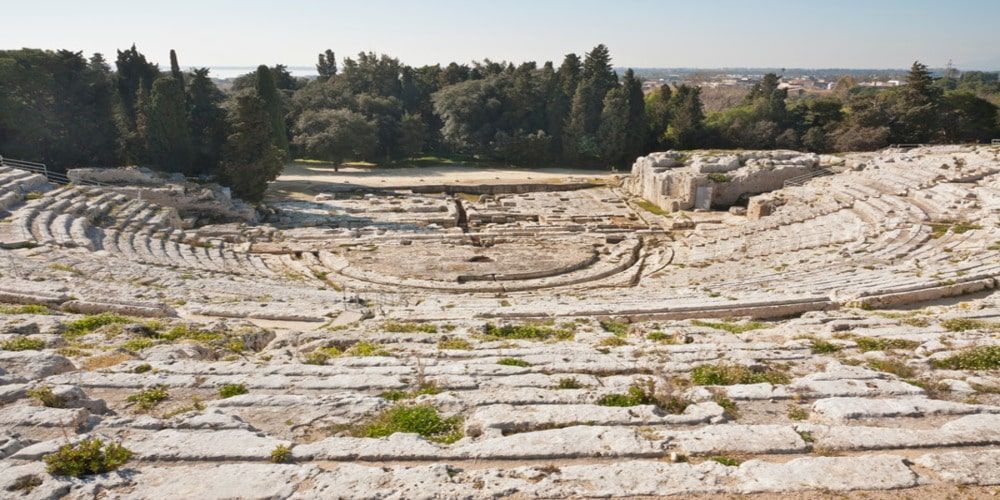
The Greek theatre in Syracuse is a wonderful example among Italian ancient amphitheatres. It's set into the Archeological Neapolis Park and dates back to the V century b.C., during the peak of the Magna Graecia.
This open-air arena is perfectly preserved and it is one of the greatest in Ancient World; nowadays it is still used but in a rational manner in order to keep it intact. Anyway, apart from guided tour for tourists from all over the world, many classic Greek and Roman dramas, opera productions and ballet performances take place here. Among them, we wish to recall Conversation about Tiresias, one of the last work of the beloved writer Andrea Camilleri.
The amphitheatre and its programme are managed by the INDA (National Institute of Ancient Drama), an important cultural foundation.
Visit Syracuse's Greek Theater and archaeological park!4. Teatro della Pergola, Florence - Tuscany
La Pergola is an amazing example of Italian theatre of 1600 and in particular of “sala all'italiana”, that is “Italian style stage”, that focuses on the classic horseshoe shape and overlapped loges lines.
It is a reference in Florence, where it was build between 1652 and 1656 thanks to the Accademia degli Immobili, a group of noblemen involved in art and culture, and it was an exclusive place for Medici court.
During the XX century, the theatre presented especially melodramas but from the 1950s onwards became a reference for prosa performances lovers. In addition, from 1979 to 1996 it housed the Bottega Teatrale di Firenze, an acting school for young actors directed by Vittorio Gassman.
Nowadays, the Teatro La Pergola presents various morning, evening and night (after 11 pm) shows, but even exhibitions and labs, and you can visit it by booking a very cheap ticket.
Enjoy the wonders of Florence with the Florence Pass!3. La Fenice Theatre, Venezia - Veneto
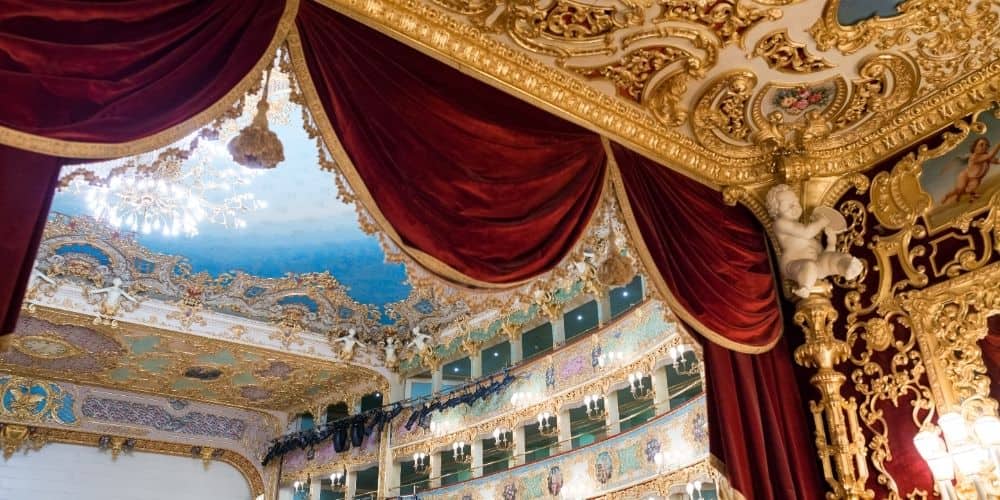
La Fenice Theatre is in Venice and has literally risen from the ashes several times. It was first inaugurated on 16 May 1772 on the occasion of the Festa della Sensa. La Fenice is one of the most famous theatres in the world because it has been and still is the seat of premieres of artists such as Rossini, Bellini, Verdi, Stravinsky, Kagel, Guarnieri, Perocco.
As mentioned above, this theatre has suffered two disastrous fires, but on both occasions, it was rebuilt more beautifully than before. The theatre was designed by Gian Antonio Selva, but after the fire of 1836 the architects Tommaso and Gian Battista Meduna restored it, adapting the original project.
La Fenice suffered another disastrous fire in 1996, but once again it was rebuilt as it was and in 2003 it was inaugurated for the third time live on television in the presence of the President of the Republic and conducted by Maestro Riccardo Muti.
The neoclassical façade features a pronaos with four Corinthian columns at the top of which is a balustrade. In the niches are sculpted the Dance and Music and in the centre the Phoenix. The theatre hall with a capacity of 1500 spectators is decorated with stucco, paintings and gold carvings. Inside the theatre there is a permanent exhibition dedicated to Maria Callas and the years she lived in Venice.
Visit La Fenice with the exclusive Pass!2. Arena, Verona - Veneto
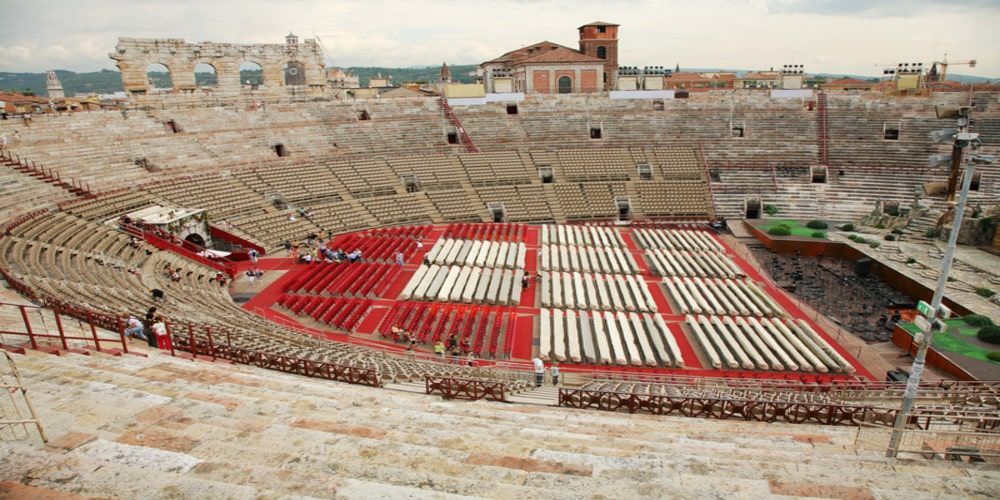
The Verona Arena is an actual institution among ancient Italian theatres and it is the third greater amphitheatre in Roman style still existing, able to host about 15.000 viewers. It was born in the I century a.D. to house gladiators fights and today it is a location for proses performances, operas and also jazz and pop music concerts (often broadcasted), sport matches, ice skating and galas.
Researches and archeological findings take place here and it is often subjected to restorative interventions, in order to preserve its eternal beauty and greatness. A greatness that, some centuries ago, was being explained by a legend about a deal with the devil.
The amphitheatre is of course an important example among Italian theatres but an important historical sightseeing for our country as well, and it is available for guided tours.
Visit the Arena in Verona with the exclusive Pass!1. Teatro San Carlo, Naples - Campania
The San Carlo Theater in Naples dates back to 1737 and is the oldest opera house in the world!
It stands next to Piazza del Plebiscito, the beating heart of the Neapolitan city. King Charles III of Bourbon ordered its construction and it was inaugurated in 1737. Work on this majestic theatre was entrusted to the architect Giovanni Antonio Medrano.
In 1809 the architect Antonio Niccolini took care of its renovation, first of all changing the façade into a neoclassical style and giving the theatre the typical connotations of a temple.
In 1816 a fire destroyed the theatre, but it was rebuilt in just nine months on the previous design with its horseshoe-shaped layout, five tiers of boxes and a gallery, as well as a large royal box. In the centre of the ceiling is the painting of Apollo presenting the world's greatest poets to Minerva, painted by the Cammarano brothers.
The greatest musicians and conductors have performed in this grand theatre, which has also hosted many ballets. In 1812, Italy's oldest ballet school was founded at San Carlo.
After the Second World War, the San Carlo Theatre was the first theatre in Italy to reopen, once again holding a record.
The San Carlo Theatre has also been included by UNESCO in the list of World Heritage monuments.
Discover the attractions of Naples with Naples Pass!About the author
Written on 27/03/2024


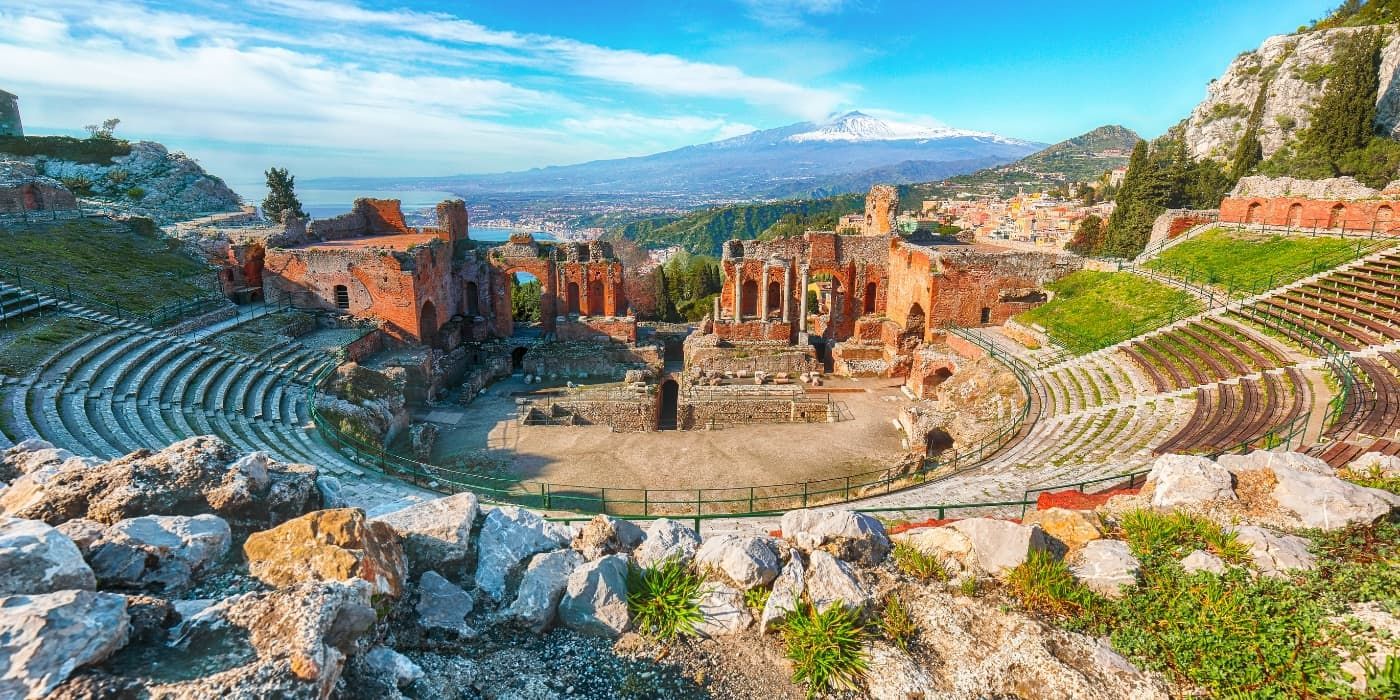
Mariateresa Bonanotte
Have you ever experienced the magic of entering the most beautiful Italian theaters? We at Visititaly will reveal you some treasures not to be missed!